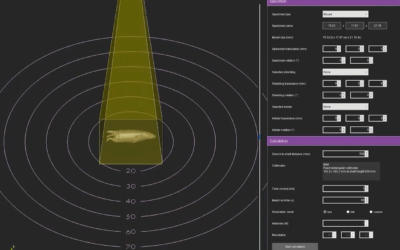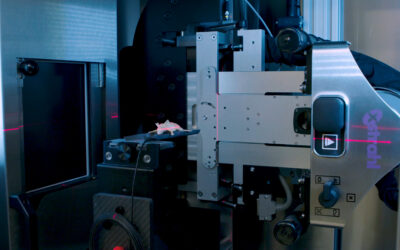
Non-ablative or mild hyperthermia (HT) has been shown in preclinical and clinical studies as a localized radiosensitizer that enhances the tumoricidal effects of radiation. Most preclinical in vivo HT studies use subcutaneous tumor models which do not adequately represent clinical conditions (e.g. proximity of normal/critical organs) or replicate the tumor microenvironment-both of which are important factors for eventual clinical translation.
In their paper “Mild hyperthermia as a localized radiosensitizer for deep-seated tumors: investigation in an orthotopic prostate cancer model in mice” Cohen J, Anvari A, Samanta S, Poirier Y, Soman S, et al, aim to demonstrate proof-of-concept of locoregional radiosensitization with superficially applied, radiofrequency (RF)-induced HT in an orthotopic mouse model of prostate cancer.
In a 4-arm study, 40 athymic male nude mice were inoculated in the prostate with luciferase-transfected human prostate cancer cells (PC3). Tumor volumes were allowed to reach 150-250 mm3 (as measured by ultrasound) following which, mice were randomized into (i) control (no intervention); (ii) HT alone; (iii) RT alone; and (iv) HT + RT. RF-induced HT was administered (Groups ii and iv) using the Oncotherm LAB EHY-100 device to achieve a target temperature of 41 °C in the prostate. RT was administered ~30 min following HT, using an image-guided small animal radiotherapy research platform. In each case, a dual arc plan was used to deliver 12 Gy to the target in a single fraction. One animal from each cohort was euthanized on Day 10 or 11 after treatment for caspase-9 and caspase-3 Western blot analysis.
The inoculation success rate was 89%. Mean tumor size at randomization (~16 days post-inoculation) was ~189 mm3 . Following the administration of RT and HT, mean tumor doubling times in days were: control = 4.2; HT = 4.5; RT = 30.4; and HT + RT = 33.4. A significant difference (p = 0.036) was noted between normalized nadir volumes for the RT alone (0.76) and the HT + RT (0.40) groups. Increased caspase-3 expression was seen in the combination treatment group compared to the other treatment groups.
These early results demonstrate the successful use of external mild HT as a localized radiosensitizer for deep-seated tumors.
This Xstrahl In Action was adapted from an article found on a National Library of Medicine website.
Radiation Dose Calculation Software for Non-Image Guided Irradiators: Webinar
Accurate dosimetry and reporting is the best practice in radiation research. While systems like the Xstrahl CIX series have been established as both reproducible and accurate, determining the exact dose delivered to a subject can be difficult due to the interactions...






